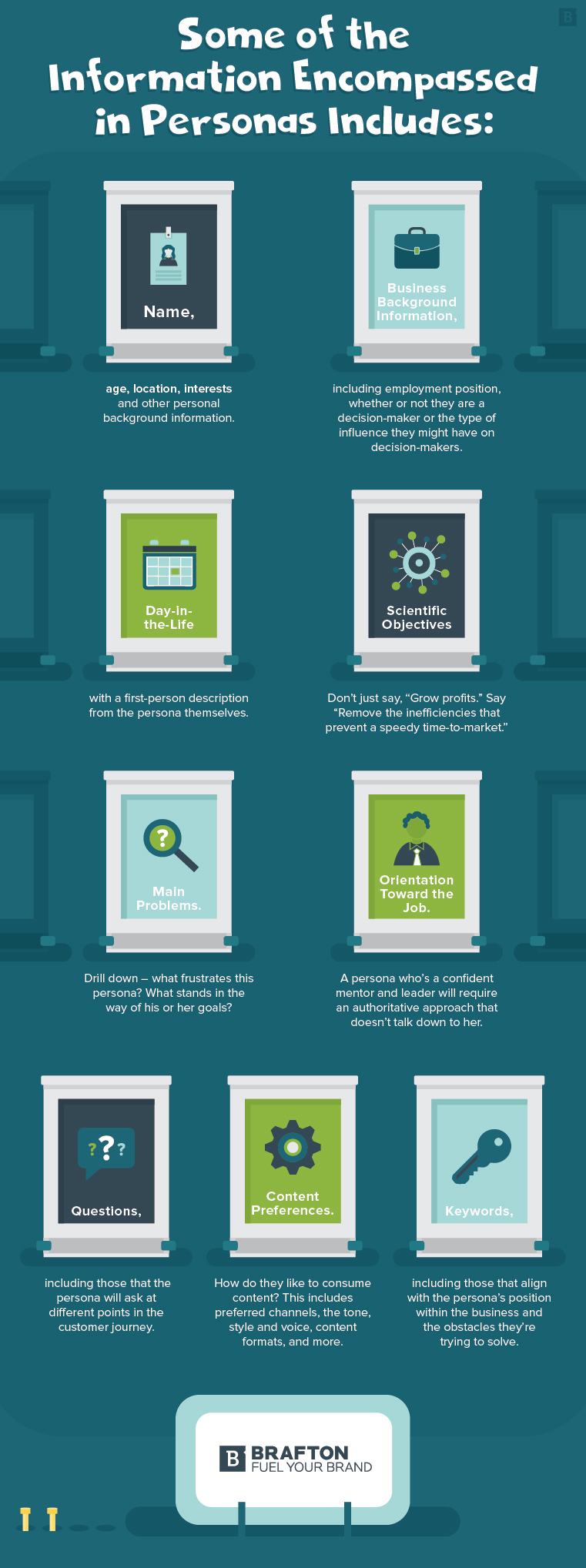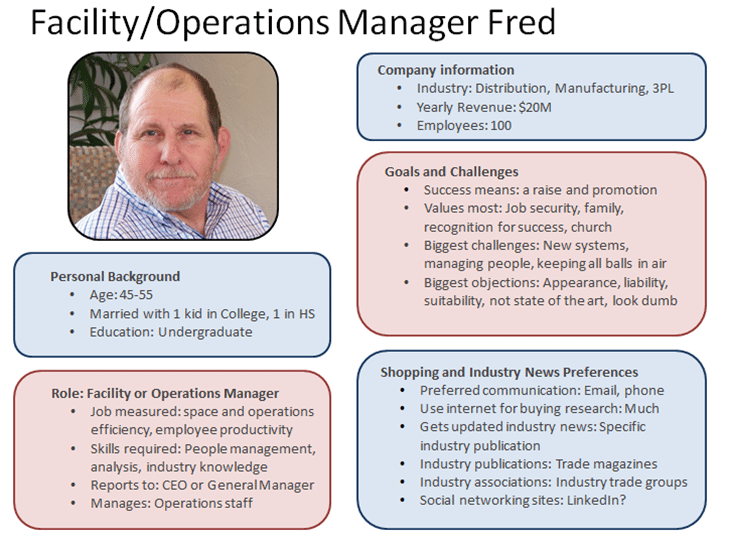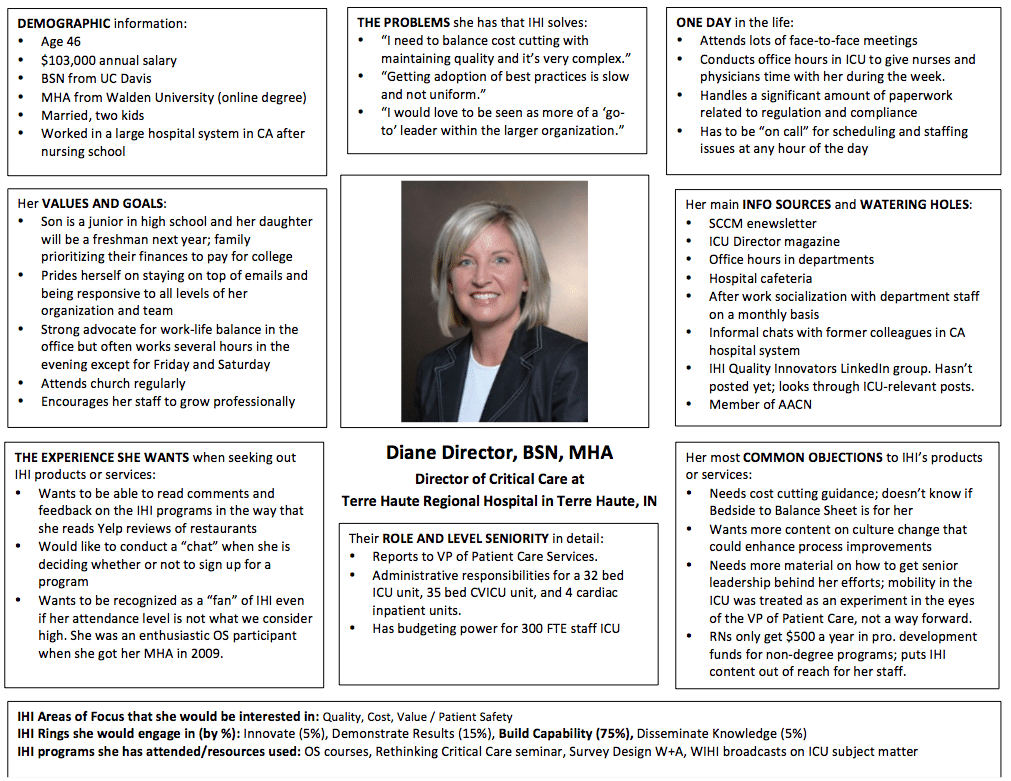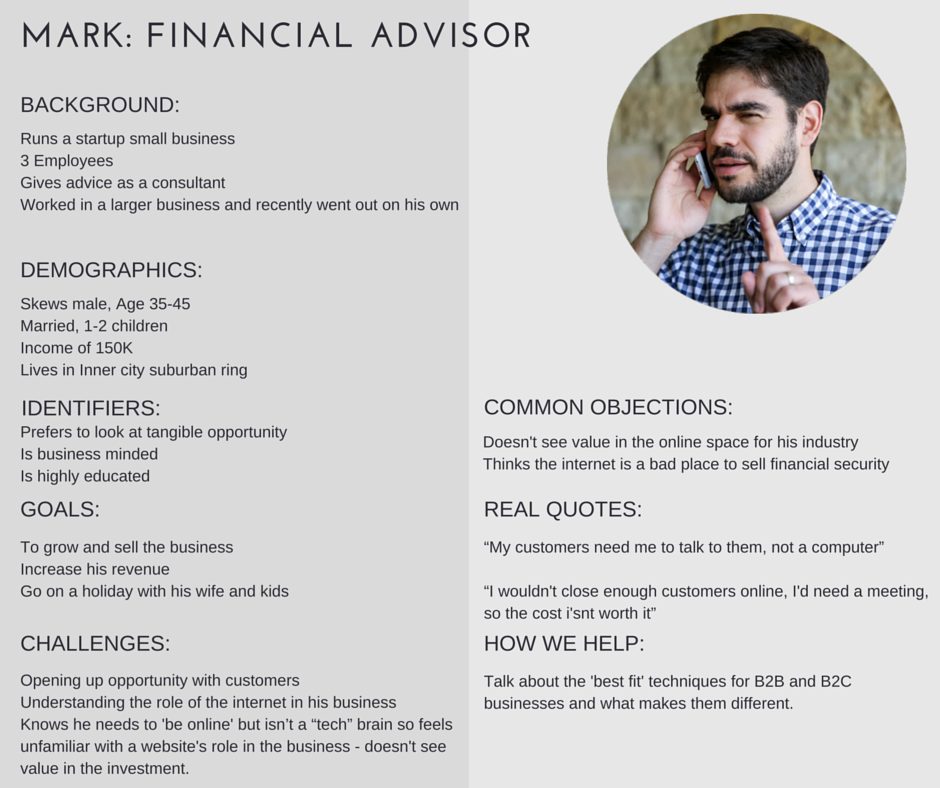Understanding your customers is an obvious cornerstone of business. After all, how can you be sure your brand is up to the task of fulfilling and championing client needs without a deep understanding of what it is that consumers are looking for?
Here’s the tricky part, though – unless you work to drill down and focus on the type of individuals you’re selling to, your customers can quickly become a sea of faces without the benefit of common threads or any defining characteristics among them.
This is where your buyer personas come in, helping you and your marketing team better understand the motivations behind purchasing decisions and the type of messaging that will appeal to your audience.
Not sure where to start when it comes to creating buyer personas? Our guide below highlights the importance that personas play in marketing, how to create them and plenty of persona examples to navigate you through the process.
What Role Do Personas Play in the Customer Experience?
I know what you’re thinking: “I already know who my customer is.” But do you really? Do you have an in-depth understanding of the things that make your customers tick, or the characteristics that identify your ideal customer? Do you know which of your customers has the highest commercial value, or which customers are influencers and which have decision-making power?
These – and a range of other aspects, which we’ll take a look at shortly – are all things that your personas can tell you, and these critical insights should be used to shape how you speak to different clients at certain points in their customer journey. Your messaging is important, and you must be able to speak to your customers in a way that directly lines up with their needs and the pain points they’re looking to have solved.
This is where a persona (specifically a buyer persona or user persona) comes in. This is a user-centred fictional character that represents a specific segment of your target audience. It’s crucial to have different personas as your customer base is unlikely to be totally homogenous. Each buyer persona illustrates a type of person who might use your site, brand or product. These personas provide valuable insights into how the consumers they represent interact with your brand, their key interests and how to create marketing messages that appeal to them.
As Marcia Riefer Johnston pointed out for the Content Marketing Institute, some teams have the bad habit of skipping over persona creation in order to get to the meat of a project. Others may have personas available to them, but choose to – GASP! – ignore them.
Once created, buyer personas are an incredibly effective resource that will be consulted time and time again. They’re important because they allow businesses to:
- Better understand consumer motivations, needs and purchasing decisions.
- Enhance brand communications with your target demographic.
- Identify and acknowledge the obstacles and pain points that consumers face.
Businesses that don’t establish their personas (or ignore them) do so at their own peril – Johnston noted that many of these organisations quite literally go out of business.
Subscribe to
The Content Marketer
Get weekly insights, advice and opinions about all things digital marketing.
Thank you for subscribing to The Content Marketer!
What Should I Include in a Buyer Persona Template?
Building user personas doesn’t just mean outlining a bunch of typical customer needs that map to the services you provide. Sure, this can be helpful, but your buyer personas should go much further than that by outlining the makeup of your ideal customer and putting a name and other key details to the sea of faces that is your target audience.
When creating multiple buyer personas, you’re actually building out fictional characters that represent real market segments of your current and potential customer audience. It’s beneficial to start by creating a persona template that outlines all the different areas of information you and your team will need to know about your target audience. Once this template is built, you can reuse it to segment your market and create more effective marketing campaigns.

Key Psychographic and Demographic Information
Psychographic and demographic data play a key role in developing a customer persona, especially if you want to use them for content marketing purposes. Demographic information includes lifestyle characteristics, such as the age, gender, ethnicity and occupation of your target customer. Psychographic data encompasses the personality traits and values that your target consumers exhibit. From a marketing perspective, psychographic and demographic traits work together to influence the purchasing decisions your target audience makes.
Therefore, your persona template will need to include psychographic and demographic data like:
- General attributes: Such as the consumer’s name, age, location, interests and other personal, background information.
- Business background information: Including job title, whether they’re a decision-maker or the type of influence they might have on decision-makers.
- Target audience segment that each persona fits into: Be as specific as possible and don’t hesitate to get granular when defining each segment.
- Day-in-the-life first-person description: This is important, as readers should begin to glean a full understanding of the persona from this perspective.
- Specific objectives: It’s important to be as focused and targeted here as possible. In other words, don’t just say, “Grow profits.” Instead, stating that this type of consumer aims to “remove the inefficiencies that prevent a speedy time-to-market” will be more efficient.
- Main problems: Drill down what frustrates this buyer persona and what stands in the way of his or her goals?
- Orientation toward the job: This part of the customer persona can be incredibly telling. For instance, a young persona who’s new to the job will require more work for awareness and education. A persona who’s been in her career for 15 years and is a confident mentor and leader, on the other hand, will require more of an authoritative tone that doesn’t talk down to her.
- Open-ended questions: Include ones that the persona will ask at different points in the customer journey, and how they relate to his or her personality and position.
- Content preferences: Given what we know about the customer persona, how does he or she like to consume content? This includes preferred channels, content formats and more.
- Tone of voice: How can you style the voice of your content marketing campaigns to ensure they resonate with your personas? Should you maintain an upbeat and friendly demeanor, or should your messaging be serious, professional and technical?
- Keywords: Include words and phrases that align with the persona’s position within the business and the obstacles they’re trying to solve.
How To Generate an Accurate Customer Persona
Once you have these basics covered, you and your team can flesh out your personas even further by asking open-ended questions about each audience persona and the types of strategies that best connect with their interests. This practice can shine a light on the other elements and ideas to include in your buyer persona template, creating a more detailed document for you to work from. The more detailed your template, the better.
For this stage of the process, ask yourself what a typical day looks like for your specific persona. Is your target audience primarily stay-at-home mothers who spend the majority of their day running errands, picking their children up from school and cooking meals for their family? Or are your personas geared toward young adults in college who spend their time in labs or studying in the library? Visualising the daily activities of your target consumers will allow you to generate accurate customer personas.
Additionally, you should go a step further by including a photo or avatar within your persona template. Taking the time to include a visual with the help of an avatar maker is an incredibly helpful extra step that will enable your team to envision the person they want to connect with.
Now that you understand what they consist of, let’s have a look at some customer persona examples.
5 Examples of Persona Templates
Now that you’re up to speed on the importance of customer personas, let’s take a look at a few real-life customer persona examples, and examine the things that work and where brands could make improvements:
1. Buffer’s Facilities/Operations Manager Fred
In this B2B persona from Buffer, we can get a good idea of who Fred is. For instance, we know he falls into the facility/operations management target audience, is married and has an undergraduate degree. We can see the kind of role Fred has within his business, as well as details about the company itself.
This persona also does a good job of outlining the goals and values Fred has, as well as the obstacles that stand in his way. However, these could be more specific and well defined – instead of just stating that Fred has difficulty “keeping all balls in the air,” the persona could go further to describe the elements associated with this struggle. Is it that Fred struggles with time management? Or that specific inefficiencies make it difficult for him to get everything done?
The same goes with the listed objections: We understand that Fred doesn’t want to look dumb – nobody does! But what types of concepts worry him the most? Is he looking to be more educated about certain things? Or is it that he doesn’t like the use of industry jargon? These are all questions worth asking and answering, which can help you further drill down your messaging and overall appeal.

2. Buffer’s Director Diane
Here we have Director Diane, another Buffer persona. Compared to Fred, Diane is much more well-rounded in her B2B persona – we can see what a day is like for her, the problems she runs into, her goals and aspirations, the experience she’s seeking when looking for products and services and more.
It’s interesting here that we also have a mix of bulleted statements, as well as quotes from Diane herself within the PROBLEMS section. It’s very beneficial to let your personas speak for themselves. This little touch goes a long way toward showing the individual’s personality and can provide cues to the type of language the persona uses and what messaging might resonate with them. Definitely take the time to create first-person statements from your personas, but ensure that these are carefully thought out and incorporate their experience, pain points and motivations.

3. Hardie Grant’s “Luxe Lover” Kelly
Here, we have a divine example of a B2C persona. Known as “Luxe Lover” Kelly, we immediately get a sense of what kind of person she is, simply by her nickname alone. We’re given a thorough examination of not just her demographic data, but also her interests, preferred publications, research habits, pain points and what makes or breaks her decision to choose any given brand.
We all know this woman; she’s immediately recognisable. She’s an upper-middle class working mom, and she likes the finer things in life — she might be a bit pretentious, even. We also know that she’s tech savvy enough to use the internet to conduct her holiday research which, between her business and her kids, she doesn’t really have time to do. So, any obstacles in her buyer journey are going to turn her off immediately.
Based on all this information, we know we need to use luxury and sophistication to appeal to her, and we understand we need to make her user experience on a travel agency’s website as simple and easy as possible.
4. DreamCube’s Adam Johnson
Next up is aspiring home owner, outdoorsman and family man, Adam. We can tell he’s got drive, ambition and — perhaps most importantly — money. We know he’s got kids and wants to build a lovely home for them within his rather extensive means. We’re also given some info about his fears regarding hiring a construction company or building contractor, which is great.
However, when it comes to his challenges, we’re left in the dark somewhat. We’re told he spends too much time dealing with his problems, which is all good and well. But, it begs the question: What problems? In his personal life or his career? And, somewhat conversely, we’re informed that he doesn’t have enough time to make critical decisions. Again, we must ask, what critical decisions? The answers to these two questions may give us the insight we need to make his buyer journey as smooth and effective as possible.
5. You&Co’s Mark
Lastly, we have a financial advisor, Mark. He’s the archetypal millennial “finance bro” who decided to take his career solo. He went to university, lives in the suburbs and has disposable income to spare. Although he’s career-driven, we’re told he still makes time for his wife and kids (he can have it all).
What’s interesting about Mark is that despite his young age (he can’t be older than 45), he doesn’t really trust the internet. This is helpful, because it’s a challenge that we can easily help him overcome by showing him the benefits of conducting business online and how they might outweigh any downsides on the other side of the coin.
The problem is what this persona doesn’t tell us: Sure, he wants to be commercially successful and spend time with his family. But beyond that, we don’t really get a holistic view of his dreams and ambitions. This persona could do with a little more insight into what he wants as opposed to just what he doesn’t want.
How To Use Personas in Your Digital Marketing Strategy
Your personas are a critical resource that you’ll use again and again to shape the strategies your brand uses to speak to your ideal customer (or customers, plural). Once you’ve framed your buyer persona and fully built them out with personality details, it’s time to take things a step further. You and your marketing team can use the information you know about your user persona to walk them through different scenarios and apply the resulting lessons to improve your connection with your customer base.
Here are a few step-by-step instructions for incorporating your personas into your marketing efforts:
- Review your current marketing campaigns: Examine your personas and the ways in which they would react to your existing marketing efforts – you might be surprised by what you learn, and it could provide the perfect opportunity to shift and improve your activities to better suit your audience segments.
- Train team members on the personas: Once you’ve used your audience personas to make any necessary adjustments or improvements to your current campaigns, it’s time to inform your team’s work on upcoming content marketing campaigns. Your personas can tell you a lot about the types of content that will resonate well with each market segment and can help you come up with topic ideas that will capture your readers’ attention and provide them with relevant insights.
- Create visual persona designs: In addition to leveraging your personas to inform your written content, personas are also incredibly beneficial for the design process. Designers can use the details tied to each persona to create visually appealing collateral that maps to the preferences of your specific buyers.
- Create customer journey maps: These user maps help visualize the connection between your brand and your target customer audience. Pairing these maps with your personas can show you the different touchpoints each persona will prefer. This way, you and your marketing team can envision the path of least resistance to get particular personas from “I’m just looking,” to “I’m ready to buy.”
- Develop your products with personas as the central focus: Once your team is aligned in who you’re targeting, you can create products or cater your services to fit the needs and wants of your customer personas.
Create Your Own Personas Now
Here at Brafton, we’ve found success with a 6-step buyer persona creation process that includes:
- Discovery.
- Review.
- Interview.
- Research.
- Development.
- Presentation.
This helps us create in-depth personas that paint a true and accurate picture of specific buyer personas for our clients.
Did our customer persona examples inspire you to create your own? We hope so, that’s why we’ve put together this handy Persona Development Template to help you get started. And, if you find that your creative juices aren’t quite flowing the way you want, Brafton’s Persona Development Service is here to help.
Download the Persona Development Template:
Here’s your editable Persona Development Template! We’re also sending it to your inbox so it’s easy to find – look for an email from info@brafton.com. Thanks!
By entering your email address, you agree to receive emails from Brafton in accordance with our Privacy Policy. You may unsubscribe from these communications at any time.
Editor’s note: Updated January 2023.








